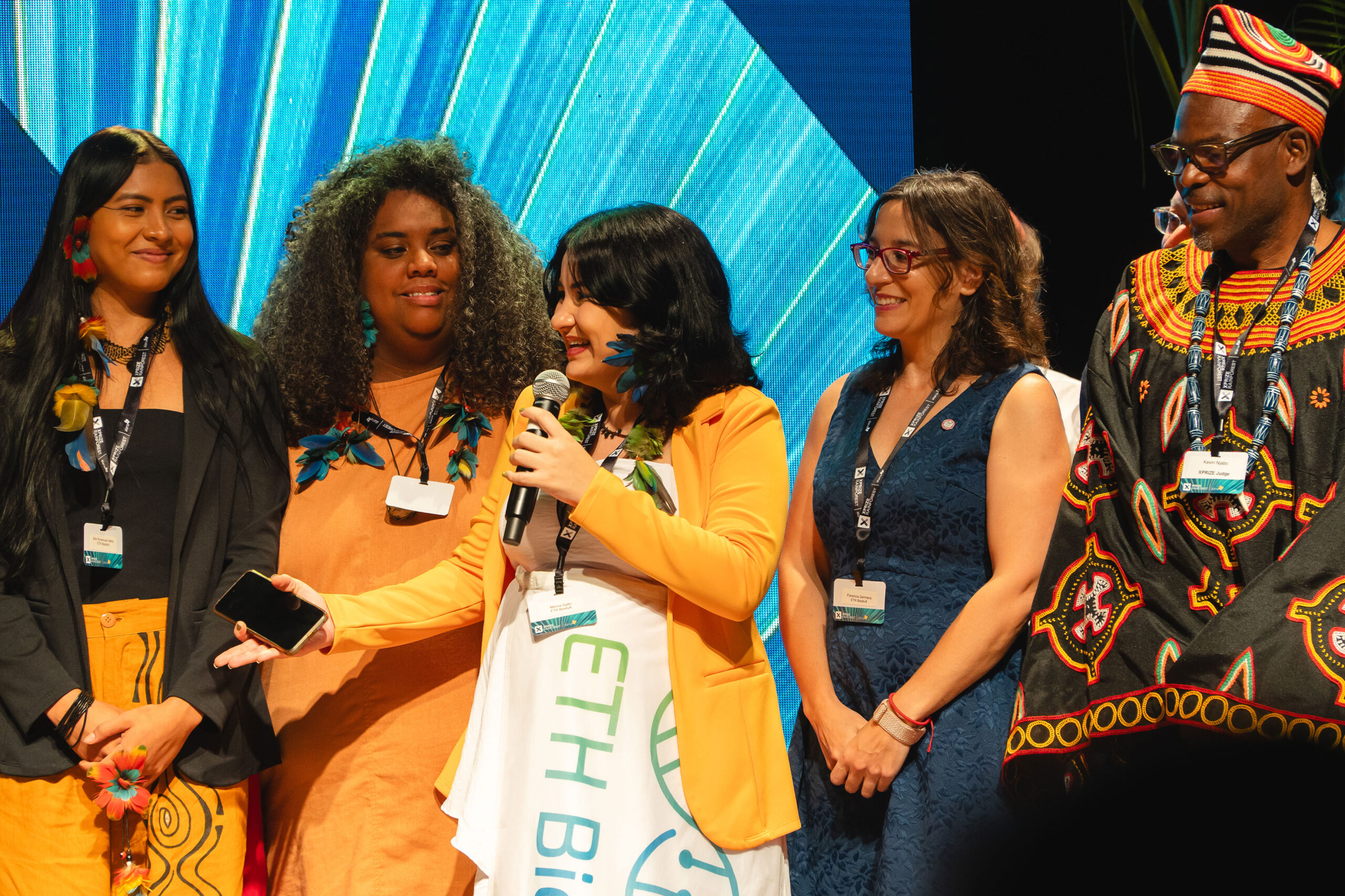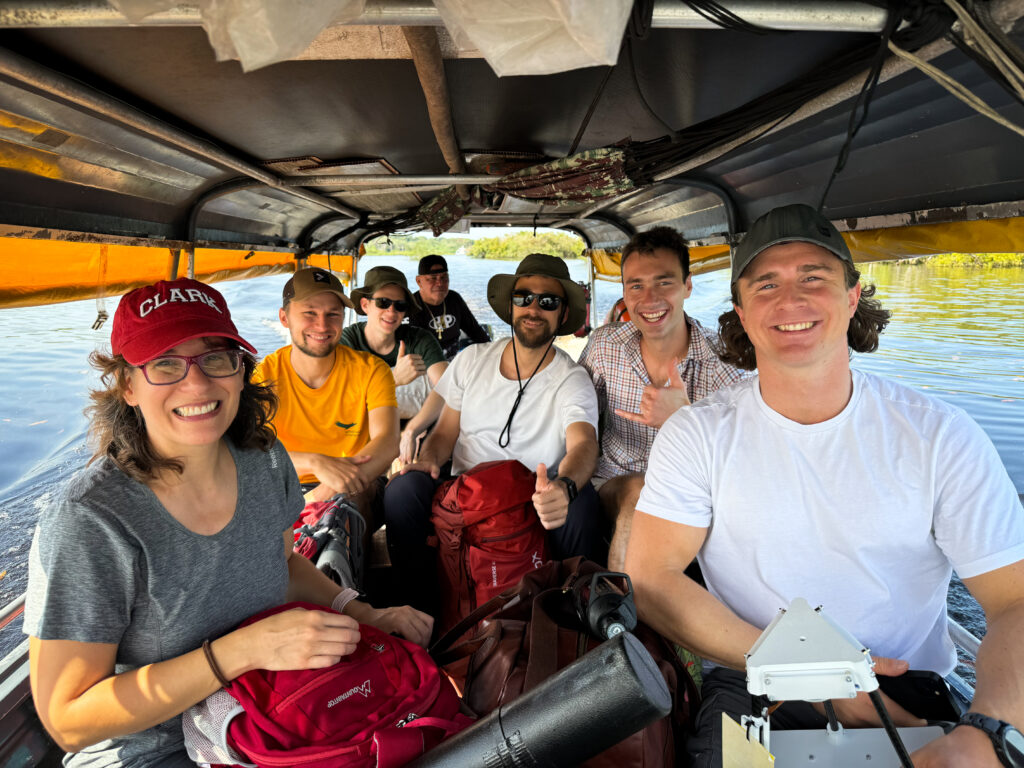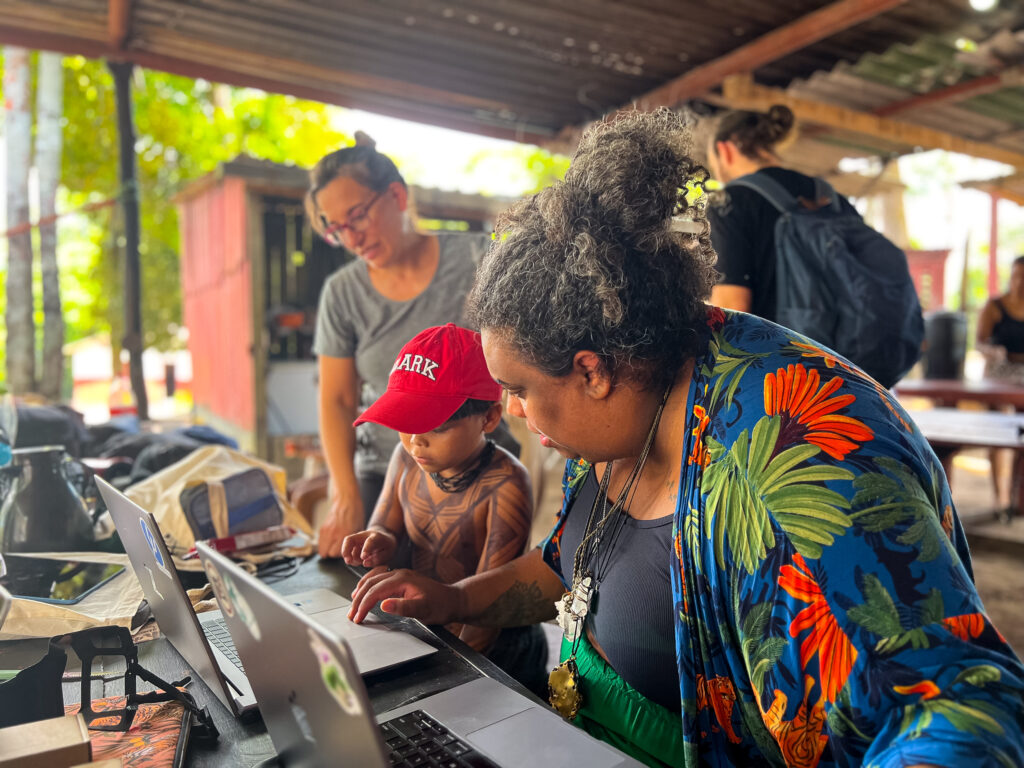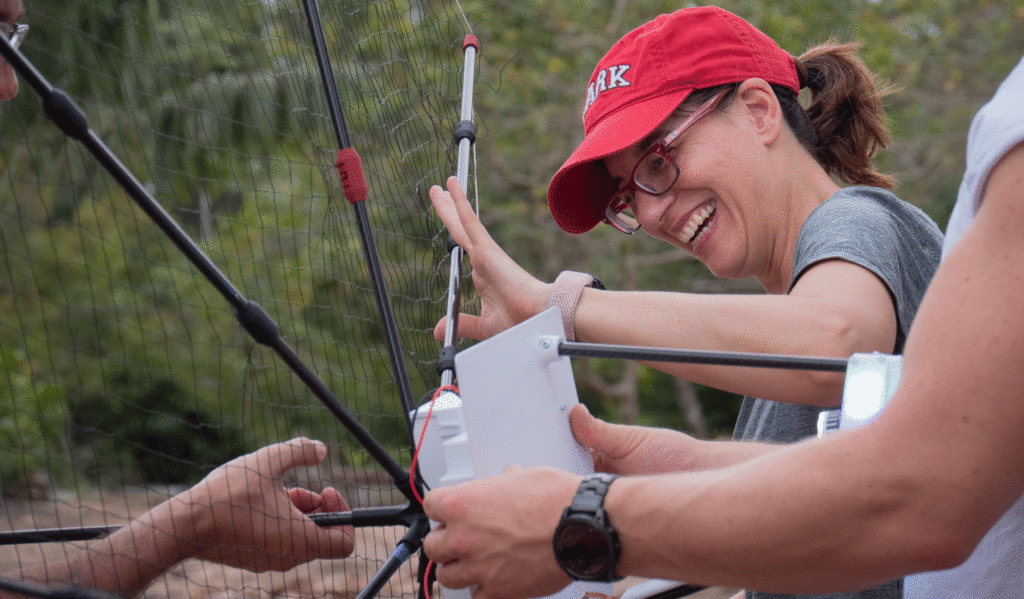XPRIZE award honors work of Clark geographer, research team in the Amazon

Geography Professor Florencia Sangermano traveled to Rio de Janeiro last week to accept an award in the $10 million XPRIZE Rainforest competition at the G20 Social Summit.
Sangermano joined leaders of the 51-member global research team ETH BiodivX to collect the $250,000 Bonus Prize, noting they were “very happy to be recognized for the part of the work that we were the most proud of — working with the local communities and Indigenous communities.”
The intense, five-year rainforest competition started with 300 teams from around the world, including conservationists, scientists, engineers, roboticists, and experts from Indigenous and local communities, challenging them to use technologically advanced techniques to rapidly survey tropical forest biodiversity and better understand the ecosystem.
Following the 2023 semifinals held in a Singapore tropical forest, Switzerland-based ETH BiodivX advanced to compete against five other finalists in the Brazilian Amazon. Throughout July 2024, each team had only 24 hours to remotely collect biodiversity data from a 38.6-square-mile section of the rainforest, and 48 hours to analyze the data, identify species, and provide impactful, real-time environmental insights.
Team ETH BiodivX included scientists from 14 countries; Professor Sangermano was the only one affiliated with a U.S. university. Together, team members were able to integrate their knowledge of robotics, ecology, eDNA, artificial intelligence, economics, geography, human health, art, and more.
“Each of us had our unique expertise, and we worked together with the shared passion of protecting the most biodiversity-rich ecosystems,” Sangermano says.
The Clark professor’s expertise in ecoacoustics, geographic information science (GIS), and remote sensing helped inform the environmental insights the team derived from data gathered in the Amazon. She first used this novel approach in the woodlands and fields of Massachusetts, where she recorded the sounds of wildlife, humans, and the weather and integrated remote sensing satellite data to better understand ecosystem diversity and health.
“She even outlasted our robots, working tirelessly through the nights to push the boundaries of how we study, understand, and value rainforest biodiversity.”
Stefano Mintchev
A National Academy of Sciences Kavli Frontiers of Science Fellow, Sangermano played “a pivotal role in the competition,” from conceiving the sampling strategy to deploying acoustic sensors and analyzing the data collected, according to Stefano Mintchev, one of the team’s three co-leads and an assistant professor in ETH Zürich’s Environmental Robotics Laboratory.
“She even outlasted our robots, working tirelessly through the nights to push the boundaries of how we study, understand, and value rainforest biodiversity,” he says.
To deploy equipment and collect data from the research area, team ETH BiodivX relied on drones attached to spider web-like “rafts” built from netting and ultralight carbon fiber poles. The team’s equipment included acoustic recorders for capturing animal sounds; sticky traps to gather insects; a “backpack lab” to process e-DNA samples; a Starlink kit for remote, satellite internet; computers; and a generator for electricity.
Sangermano’s expertise — including her use of recorders — allowed the team to identify more than 90 species of bats and birds, along with a few amphibians, and a howler monkey. Overall, the team identified 376 species of plants and animals via the recordings, sticky traps, and drone photos.
“Professor Sangermano has been integral to our team’s success, from its inception until the last minute of the competition,” says Kristy Deiner, a team co-lead and assistant professor in ETH Zürich’sDepartment of Environmental Systems Science. “Her deep knowledge in GIS and soundscapes brought these technologies to a new level, all with sincere dedication to improve how we monitor and value tropical rainforests.”
Co-lead David Dao, co-founder of the nonprofit GainForest and researcher at ETH Zürich, described Sangermano as “a brilliant scientist in remote sensing and bioacoustics” who was embraced by “local communities who loved her kind personality and her commitment to co-designing solutions.”


Team ETH BiodivX worked closely with Indigenous and local communities, who shared their knowledge of animal and plant life, contributing an invaluable piece of the puzzle, according to Sangermano. Some of them joined the ETH BiodivX team and participated in the 72-hour quest in July.
“For me, the best part of the competition was the journey, the connections, the personal interactions, learning from each other, and most importantly, learning from the local communities,” she says. “It was an honor to work with such talented collaborators from all around the globe who contributed on site and remotely during the finals and throughout four years of the competition.
“I’m sure that the technologies developed during the competition will transform the future of conservation monitoring.”
As for the prize, Sangermano said the team members will develop a plan on how to use the bonus money. “We are committed to further conservation technologies and working with local communities,” she said.
“We are immensely proud of what Professor Sangermano accomplished together with her international collaborators on Team ETH BiodivX, and are thrilled that the team has been recognized for their contributions to biodiversity in the Amazon,” President David Fithian said.
“This is one of many examples of what our faculty scholars do often, and best — they share a seat at the table with other experts from around the world to tackle the most complicated challenges caused by our warming planet and share knowledge and tools with communities.”
Next up for Sangermano: continuing to incorporate these technologies into her courses. During the spring semester, a group of undergraduate students will learn ecoacoustics and join her to monitor biodiversity in restored cranberry bogs in Plymouth, Massachusetts, part of a research collaboration with Biology Professor Elizabeth Bone.

Story by Angela Bazydlo and Meredith Woodward King
Podcast produced by Melissa Hanson
Video produced by Beth Prendergast
Videographer: Luca Desiderato
Video footage and photos courtesy of Team ETH BiodivX


